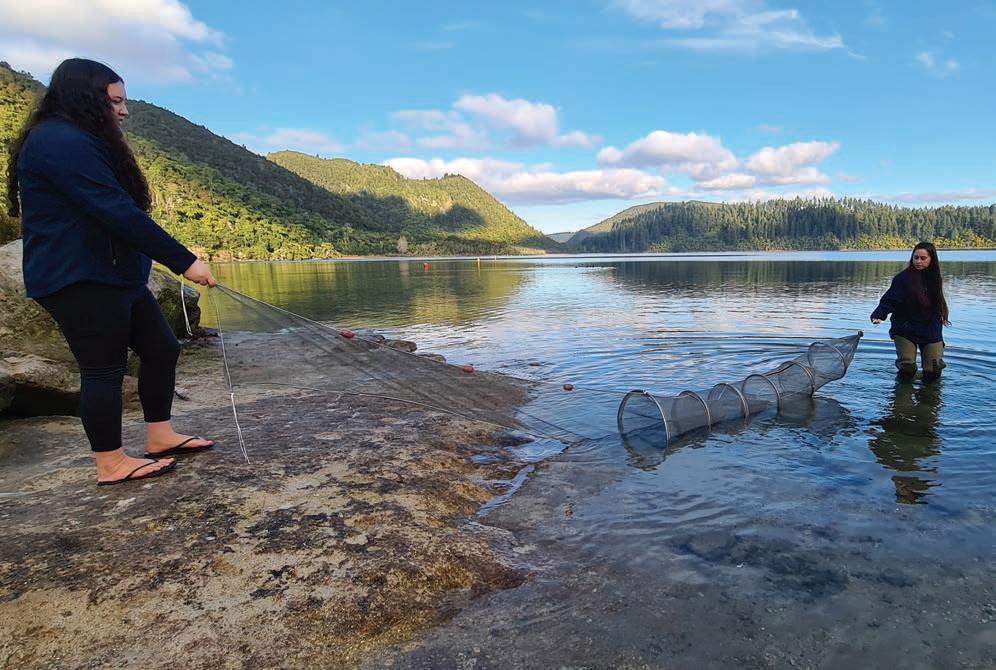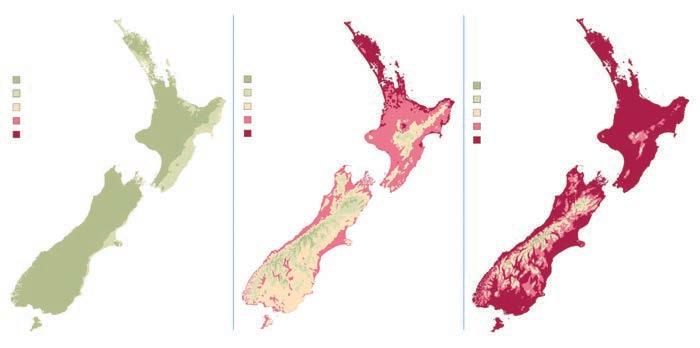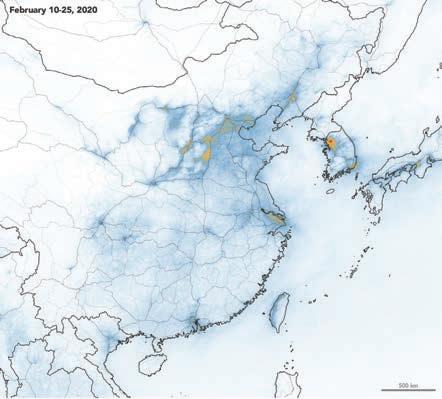
5 minute read
News in brief
HIGH AND DRY
Auckland residents are entering their third month of water restrictions as a record dry spell has left the city gasping. Drought conditions across a number of North Island cities and regions this year have been among some of the most severe on record. Whangarei, Auckland, Whitianga, Hamilton, Tauranga, Whakatane, Napier and Taupo all recorded their driest January-May period ever. The City of Sails has been particularly hard hit, with city reservoirs falling below half full for the first time in more than 25 years and authorities forced to seek emergency supplies from the Waikato River. NIWA climate change projections predict increasingly frequent and extreme drought events for northern and eastern New Zealand in the decades ahead.
Advertisement
GRAPPLING WITH ALIEN INVADERS
WATER, WATER – EVERYWHERE
A large – and internationally significant – underwater aquifer has been mapped o the Canterbury coast. Located just 20m below the seafloor and extending up to 60km out to sea, the freshwater resource is one of the few significant oshore aquifers located anywhere in the world. The reservoir was uncovered by an international team, including NIWA researchers, working on a European Research Council project. They used remote mapping and geophysical modelling techniques to scope its size. It is estimated to contain as much as 2000km3 of water, equivalent to up to half the volume of the groundwater across the entire Canterbury region.

acey Burton Tr Wet feet were the order of the day for more than 120 Central Otago students who joined NIWA freshwater scientists for an aquatic health check of Lake Dunstan earlier this year. The year eight Cromwell College students escaped the classroom to explore their lake and the problems it faces, especially from the invasive alien weed species lagarosiphon. The students used a grapnel to find and identify aquatic plants, tested water clarity, categorised invertebrates and took a dive under the surface using NIWA’s virtual reality headsets. The event was organised along with LINZ and Otago Regional Council to empower the young “citizen scientists” to play a role in protecting their freshwater playground.
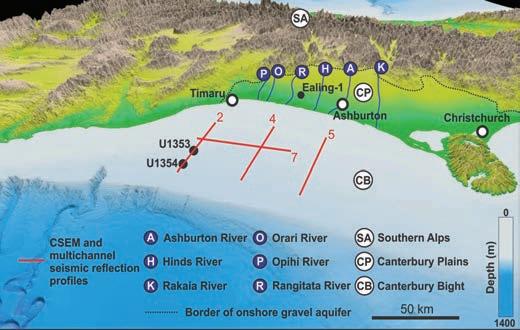

THE RETURN OF THE ASHES
Atmospheric scientists tracked smoke from Australia’s summer bushfires travelling high around the globe, months after the fires had darkened New Zealand skies. The fires, which were finally contained in mid-February, caused orange, hazy skies and short-term carbon monoxide spikes on this side of the Tasman around New Year. However, the smoke and carbon aerosol they injected into the stratosphere eventually rose to about 35km above the earth and continued to travel around the globe for months. At its height the main bulk of the plume was about 5km high and hundreds of kilometres wide. NIWA climate scientists also documented ash deposits caused by the fires during their annual aerial survey of South Island glaciers in March.
Smoke haze on the Lindis Pass. (Rebekah Parsons-King)
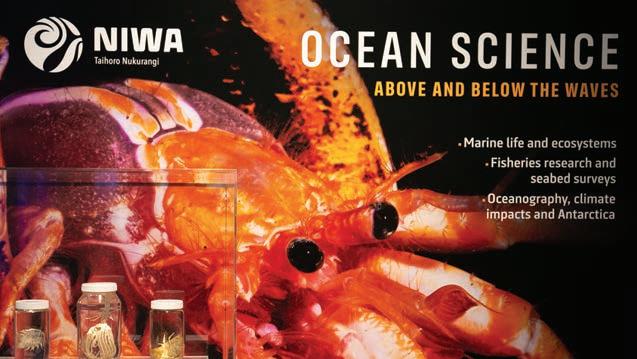

Amy Parsons-King

Amy Parsons-King
Stuart Mackay
DRAWN TO THE DEEP
More than 50,000 people poured through the doors for NIWA’s highly successful “Dive Deep into Ocean Science” display at the Otago Museum. The 8-month-long scientific event ran alongside the museum’s hosting of the touring “James Cameron – Challenging the Deep” exhibition. Designed to deliver an “upclose and personal” experience of NIWA’s ocean and Antarctic science, the display involved video and photographic exhibits backed by a series of popular scientific talks by NIWA sta. Virtual reality headsets gave users the chance to plunge beneath the Antarctic ice with NIWA’s specialist dive team. Hundreds also jumped at the chance to tour RV Tangaroa during a visit to Dunedin timed with the start of the exhibition.

LUCKY DIP
A 4m, 110kg giant hauled up from deep waters east of New Zealand has left squid specialists smiling. The crew of NIWA’s research fl agship RV Tangaroa pulled up the unexpected specimen during a fi sheries survey on the Chatham Rise. Giant squid are rarely encountered globally but New Zealand is fast developing something of a reputation as a hotspot, with specimens landed about once every 10 years. Fortuitously, one of New Zealand’s leading squid researchers was onboard Tangaroa when the intact specimen was landed. Under expert guidance, key body parts such as the squid’s stomach and enormous eyes were recovered to enable further insights into the mysterious lives of these deepsea giants.
Stuart Mackay
EMPOWERING STUDENTS
Young New Zealanders can now access the most upto-date material about the science of climate change, thanks to a new educational resource on NIWA’s website. “Climate change information for Climate Solvers” is a plain English guide, jam-packed with images, video and graphics to explain New Zealand’s climate change projections and impacts. The resources are aimed at empowering students to explore the things that they and their communities can do to help combat climate change. The content has been compiled to complement the climate change teaching resources and wellbeing guide released by the Ministry of Education earlier this year.


SMOKE SNIFFERS
Air quality researchers are on the lookout for citizen scientists to help sni out smoke. Smoke from home heating is the biggest source of air pollution in New Zealand, and the arrival of winter means home fi res have lit up across the country. NIWA researchers have launched a project via the NIWA Citizen Science app to gather more information on how and when smoke is a ecting people. The team is asking New Zealanders to record where and when woodsmoke is a ecting their health and lives, so they can work with regional councils to keep Kiwis warm – and healthy –at home.




